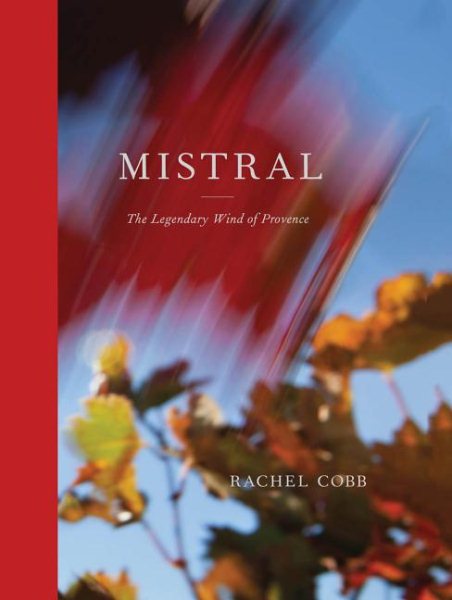By Ellen Rodgers. Special to the Clarion-Ledger Sunday print edition (January 13)
It is immediately evident upon viewing Mistral by Rachel Cobb the amount of passion and doggedness it would require to chase something that is unseen. The wind, for all intents and purposes is invisible. What we really see when viewing the wind is the effects it has on an area.
 The Mistral is the wind that plagues Provence, as southern California is plagued by the Santa Ana winds. Over centuries of living in the region, the natives of Provence have learned ways to account for the strong and sudden wind.
The Mistral is the wind that plagues Provence, as southern California is plagued by the Santa Ana winds. Over centuries of living in the region, the natives of Provence have learned ways to account for the strong and sudden wind.
Mrs. Cobb started documenting the Mistral in the late 1990s. She began it in a local library in Provence pouring through old books looking for anything about the wind. Over the years, between her assignments with various newspapers and magazines she would travel back to make photos of the wind.
Eventually, she realized she needed to be immersed in the area to make any headway on this project. She, her husband, and their young son moved overseas to Provence. Cobb eludes to the length of time spent on this project, “I started this story using Kodachrome film and digging through a small-town library, and I have finished it using a digital camera and the Internet”.
Cobb’s photographs depict the way people prepare for these sudden and strong gusts of wind, which have been recorded to last up to 65 hours. 2-kilogram weights hold a door open; stones are placed on top of the tile shingles; upside down glasses weigh down tablecloths; paperweights, and plastic clips hold a table edge; cement rings placed on the bottom of wheeled gift card racks keep them from rolling away; the eaves of houses show the multiple layers of roof tiles sometimes number up to four; and the north side of buildings are without windows. That’s the windward side.
Images of fauna show how the wildlife of the region prepares for and copes with the mistral. A horse squints its eyes as a strong wind blows its mane. Spiders position their webs so they are less exposed to the wind, while other spiders will weave a smaller web.
In one photograph, taken on the top of Mont Ventoux, which is said to be one of the windiest places on Earth, a hiker in snow gear is on his heels and appears to be sitting in an invisible chair. The chair is the enormous force of wind that can support his entire weight.
Perhaps nothing is more affected by this natural phenomenon than the inhabitants of this region, people and plant life alike. A young girl holds her skirt down in the wind, whilst descending a set of stone stairs, which show the wear of years and countless foot treads. Cobb’s own son is shown with his arms spread wide to the mistral and leaning into it. Again, her young son has his eyes shielded outdoors from what one can only imagine is the dust. Cherries are bruised on one side where the wind has battered them for too long, thus ruining the crop. The edges of a flower’s petals are ragged and feathered from enduring the relentless wind.
All of these photographs make it a little easier for the viewer to envision what it would be like to live with such a presence nearly two hundred days out of every year.
These photographs are pure and transcendent, employing none of the current and banal trends in photography.
The word mistral means “masterly”. Cobb showcases her enormous talent in this book illustrating the masterful wind of Provence.
Ellen Rodgers, who worked at Lemuria Bookstore for twelve years, is a photographer born and raised in the Mississippi Delta. She exhibits work that focuses on the region, and Vice chose her photographs to represent Mississippi in the 50 States of Art project.
Signed copies of Mistral are available at our online store.


Comments are closed.